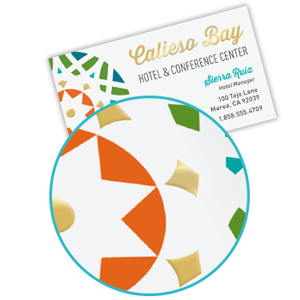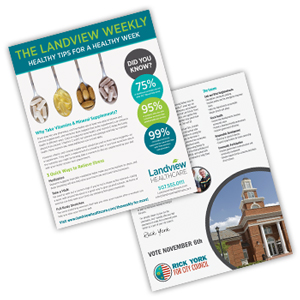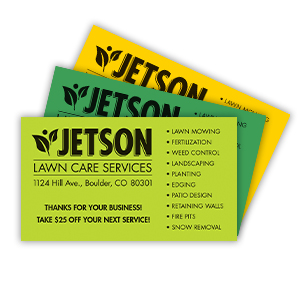Whether your customer is looking for a way to promote their event in the community, wants to create posters to inform their clients about special offers or summer sales, or simply wants to create more striking décor for their space, poster design can be a challenge. When you are called upon to help them create a design for their upcoming event or promotion, use these four tips to create a striking poster design.
1. Stick to the Most Important Information
A poster might be a large print piece, but that doesn’t mean you should cover every inch with information. A good poster gets its message across clearly, and the best way to do that is to focus on a small amount of information. For example, if your customer is using their poster to promote a fundraiser, their poster should include the essential information: what kind of event it is, when and where it will be held, and other essential information like sale details or ticket prices.
This goes double when a poster is going to be displayed on a crowded bulletin board or in a busy space. If the people reading it only have a moment to see what it says, focusing on the information that is most important will ensure that it is memorable even in a busy location. And speaking of location…
2. Keep Location in Mind
Is the poster you are designing going to go in a specific place? It’s important to keep that location in mind. If the poster is going to be displayed on a community bulletin board, for example, you’ll want to create an eyecatching design that will capture attention. If it’s going to be displayed in your customer’s place of business or at their event, they might want to create something that matches their brand or event décor.
3. Use Your Colors
With full color print, the options for color on your customer’s poster are nearly endless. That’s why color is one of the most useful tools in creating an effective poster design. Your customer can use bright colors to add energy and excitement to their sale, use seasonal colors to highlight a seasonal event—think red, white, and blue for the Fourth of July—or use high contrast colors for a more readable design.
4. Take a Step Back
Think about where you see posters. Sometimes you walk right up next to them, but sometimes you see them from across the room. That’s why a poster should be as visually impactful from a distance as it is from nearby. No matter what your customer’s poster is for, it’s important for that poster to be appealing from a variety of vantage points. Don’t get bogged down with the little details as you design—take a step back, too!
Do you have more tips for designing a great poster? We’d love to hear your suggestions in the comments below.

 When your customer is creating an informational flyer, a sales sheet for meetings, or a company newsletter, it’s important that their design guides readers through the information and makes it easy—and enticing—to take the next step. If they come to you for guidance on designing their sales sheets, it’s important that you know how to make their sales sheet effective. Here are our tips for designing a better
When your customer is creating an informational flyer, a sales sheet for meetings, or a company newsletter, it’s important that their design guides readers through the information and makes it easy—and enticing—to take the next step. If they come to you for guidance on designing their sales sheets, it’s important that you know how to make their sales sheet effective. Here are our tips for designing a better  Whether things are still snowy in your area or it’s already a warm day, spring is a great time for your customers to embrace color in their print order. Vibrant color can help bring eyecatching style to print for upcoming events, capture attention for spring sales, and might even be something that becomes a favorite for year-round use. And while every print piece is a chance to print a colorful image, colorful stocks are another great way to bring vibrant color to their upcoming print orders. Here are just a few of the products that allow your customer to embrace colorful stocks and substrates.
Whether things are still snowy in your area or it’s already a warm day, spring is a great time for your customers to embrace color in their print order. Vibrant color can help bring eyecatching style to print for upcoming events, capture attention for spring sales, and might even be something that becomes a favorite for year-round use. And while every print piece is a chance to print a colorful image, colorful stocks are another great way to bring vibrant color to their upcoming print orders. Here are just a few of the products that allow your customer to embrace colorful stocks and substrates.